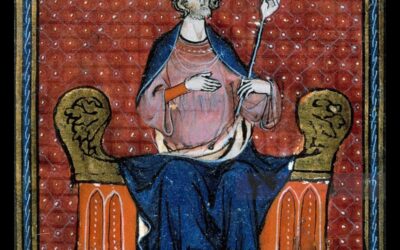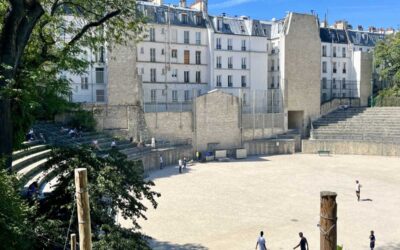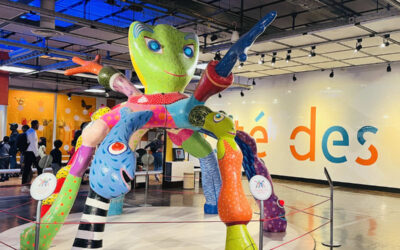The Sacré-Cœur Basilica in Paris is that magnificent hilltop masterpiece that looks like it dropped straight out of a fairytale. Situated atop the picturesque Montmartre hill, it is the kind of place where you half-expect to stumble upon a troubadour strumming a guitar and serenading you with “La Vie en Rose.”
Located in the 18th arrondissement, the Basilica is like a cherry sitting on a cake, overlooking much of Paris from its vantage point in the north. From this iconic church with the large white dome, you can see some of best views are at sunset across the city.
But the Basilica is not without its controversies, and it was only designated as a “historic monument of France” in 2022.
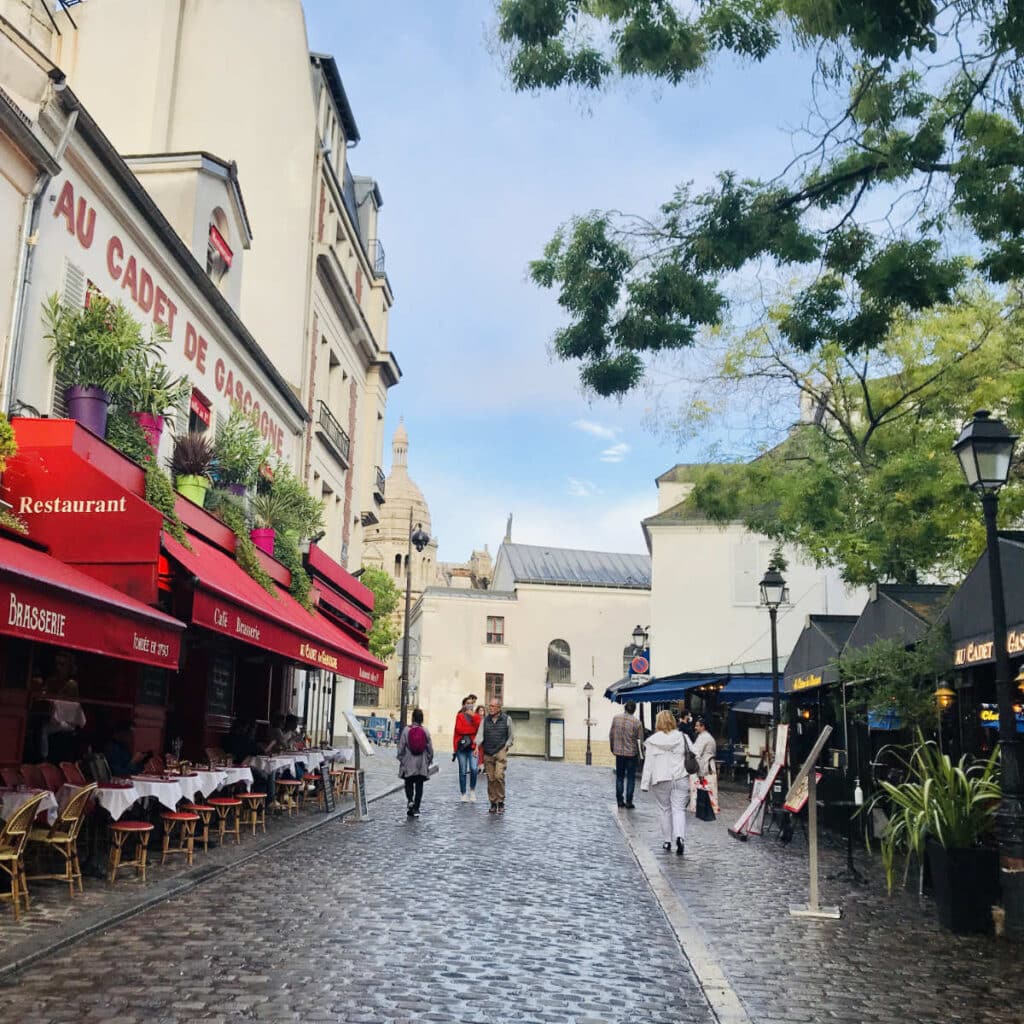
And that is because although it is today one of the most recognizable landmarks of the French capital, it is neither very old, nor is it very loved by a handful of influential Parisians.
The story of Sacré-Cœur is like something out of a French soap opera with half the population of Paris for it, and the other half against. The basilica was built as a “penance” for the sins of the Second French Empire that culminated with the 1871 Paris Commune riots.
As one of the newest churches in Paris, it was built to see and be seen. Talk about architectural therapy!
Due to all the controversies, construction began in the late 19th century, and it took a whopping 44 years to complete. The controversy remains to this day.
So let’s find out a few facts about the Sacré Coeur Basilica and its history, shall we? Allons-y!
- 1. Its construction was proposed in 1870 to prevent "the moral decline of France".
- 2. It is a Roman Catholic church.
- 3. It is located on a hill known as Butte Montmartre.
- 4. It took 40 years to construct and was consecrated in 1919.
- 5. As one of Paris's newest churches, it has a Gothic-Romanesque-Byzantine style.
- 6. Its opponents tried to derail the project.
- 7. It was financed largely by private donors.
- 8. It has 270 steps to the top.
- 9. Its stone is white and cleans itself in the rain.
- 10. It is one of the highest point in Paris.
- 11. It holds the largest bell in France, called the "Savoyarde".
- 12. It has one of the largest mosaic ceilings in the world.
- 13. The Square in front of Sacre Coeur is dedicated to the Paris Commune riots.
- 14. There is a funicular to take people to its entrance.
- 15. The Basilica is free to enter.
- 16. The devout are invited to spend the night in its monastery.
- 17. There is a small tourist train nearby.
1. Its construction was proposed in 1870 to prevent “the moral decline of France”.
The suggestion to build a church in Paris came from Felix Fournier, the Bishop of Nantes, following the defeat of France against the Germans. He first proposed it on September 4, 1870 after the capture of Emperor Napoleon III at the Battle of Sedan in the Franco-Prussian War.
In addition in 1871, local riots occurred all across Paris and especially in Montmartre, during the Paris Commune riots of 1871.
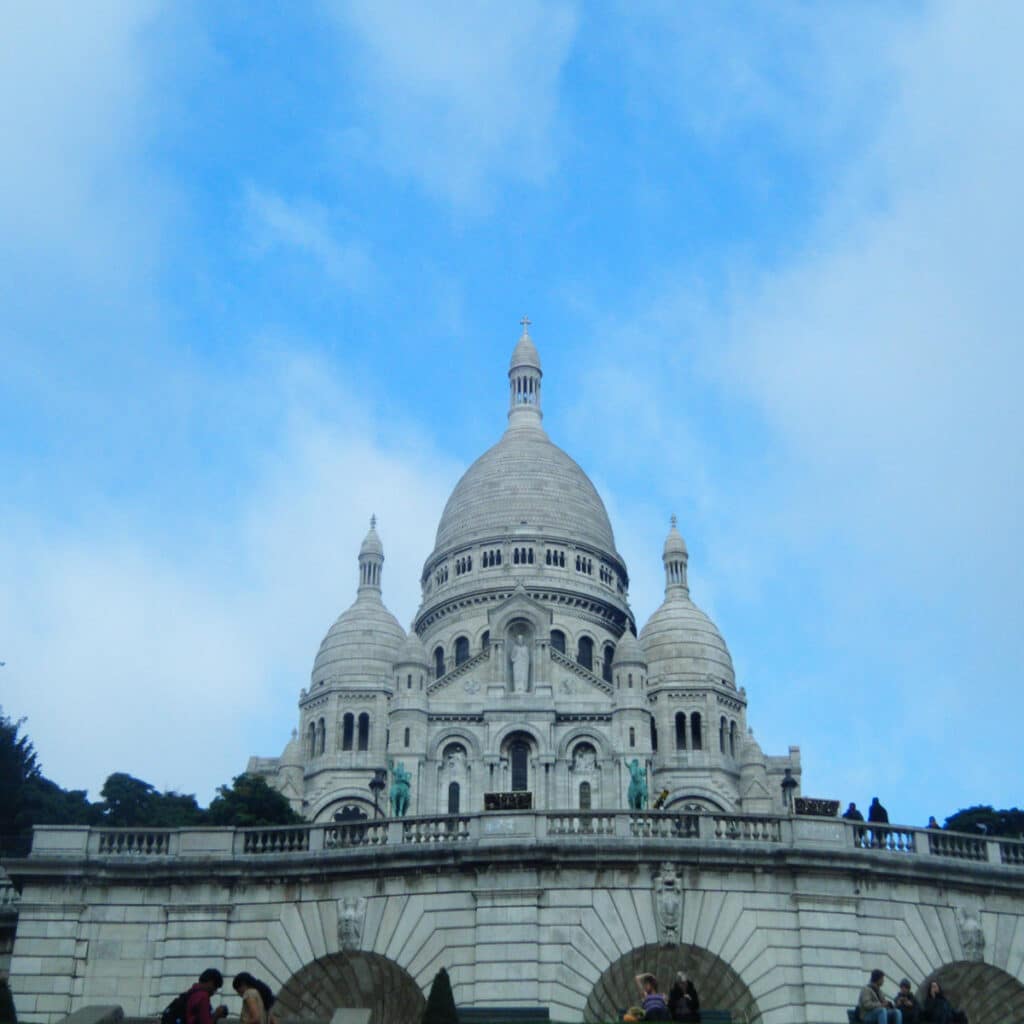
The Bishop felt that that the defeat of France was a “divine punishment for the moral decline of the country,” and advocated it as such with his allies in front of the Assemblée Nationale.
Its construction would be a battle between the conservative faithful and the left-wing republicans who felt religion should have no place in the French government policy.
2. It is a Roman Catholic church.
During the 1789 Revolution, the revolutionaries believed that the Catholic Church was pro-monarchy. Many churches including the Notre Dame de Paris Cathedral were damaged and defaced by the revolutionaries who espoused the values of self-determination in the Age of Enlightenment.
Bishop Fournier advocated a new Roman Catholic church in Paris as a way to restore that previous authority and a new “moral order”. The Sacre Coeur Basilica is dedicated to the Sacred Heart of Jesus.
3. It is located on a hill known as Butte Montmartre.
The site of Butte Montmartre (hill) was chosen because of its high altitude overlooking the city of Paris. The name “Montmartre” comes from the Latin “Mons Martis” or “Mount of Mars”, a reference to the hilltop where a temple to the god Mars stood in antiquity.

For Christian pilgrims and the devout however, the name Montmartre comes from the legend of Saint Denis, who was beheaded by the Romans in the 3rd century AD, along with his companions Saint Rustique and Saint Éleuthère.
Local tradition then holds that Saint Denis carried his own head up the hill before he died, adding to his legend. The name became “‘Mont des Martyrs” or “mountain of martys”, and then Montmartre. Saint Denis is today one of the patron saints of Paris, and one of the most famous saints in France.
In addition, in the 16th century Montmartre became the birthplace of the Society of Jesus, one of the largest and most influential religious orders in the Catholic Church.
Thus Butte Montmartre became the perfect location for the construction of the Sacre Coeur Basilica.
4. It took 40 years to construct and was consecrated in 1919.
As soon as approval for the Sacre Coeur was given, construction began. Construction began in 1875 and continued for forty years under 5 different architects. In 1876, the Archbishop of Paris inaugurated a temporary chapel here.
In 1878 the construction of the crypt began and in 1881 that of the basilica. However construction was long. The dome of the church was completed in 1899, and the bell tower finished in 1912.
The Basilica was completed in 1914, but Sacre Coeur was only formally dedicated in 1919 after the end of World War I.
5. As one of Paris’s newest churches, it has a Gothic-Romanesque-Byzantine style.
Because the Sacre Coeur is quite a recent church, it doesn’t have the same medieval architectural elements as other churches in Paris like Notre Dame, Saint Sulpice or Saint Chapelle.
Instead, its 5 architects reimagined various elements of Gothic, Byzantine, Renaissance and Romanesque styles of architecture and combined them together making adjustments as necessary.
The two equestrian statues on the facade are the French national saints Joan of Arc and King Saint Louis IX, both in bronze.

6. Its opponents tried to derail the project.
Even as it was being built, the Sacre Coeur has always generated controversy especially among the Left. Many felt that it commemorates an oppressive regime of “moral order”.
During its construction, opponents like French Prime Minister George Clemenceau and famous French writer Emile Zola spoke out against the church, wanting to keep a separation between church and state.
Shortly after the new Statue of Liberty was gifted by France to the United States, opponents of Sacre-Coeur proposed installing a full-size copy of the Statue of Liberty on top of Montmartre, directly in front of the Basilica, to block the view of the church.
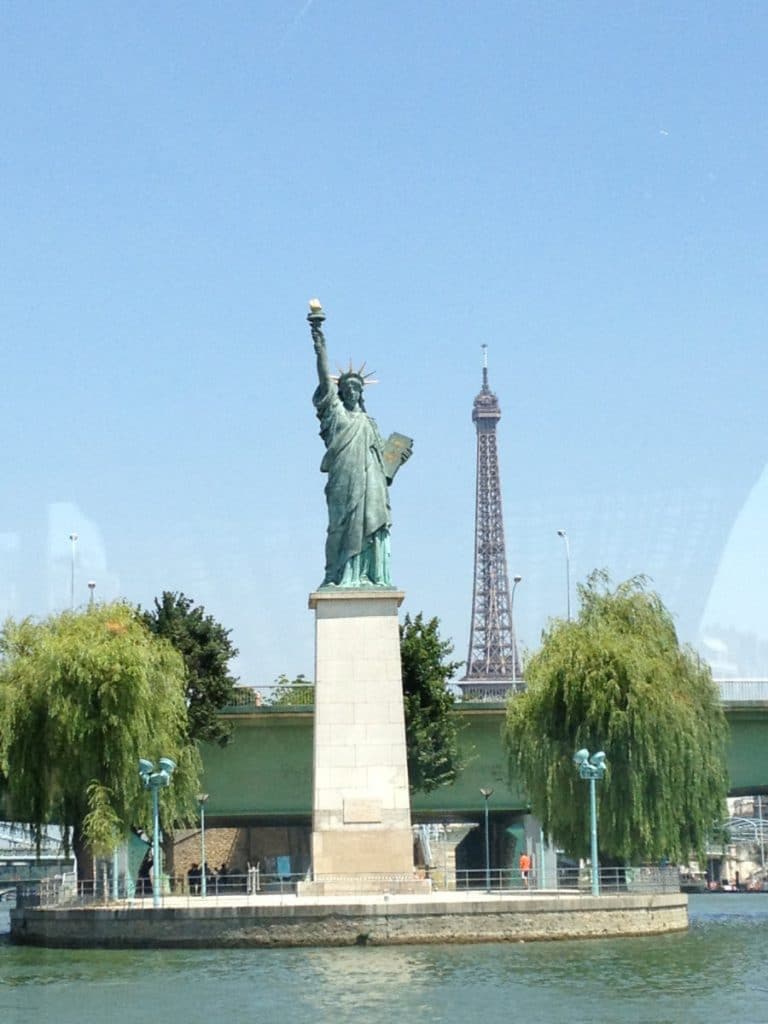
7. It was financed largely by private donors.
One of the reasons that the Sacre Coeur construction went ahead was because it was funded by donations given by devout Catholics. Millions of francs were spent on its foundation and construction, and if the project was cancelled by the government, those funds would have to be reimbursed to the donors from state coffers.
As such, construction continued even though new governments came in during its long construction period.
8. It has 270 steps to the top.
In order to reach the entrance of the Basilica, there is a series of 270 steps to the top.
From here there is a magnificent panoramic view of Paris including the Eiffel Tower, the Pantheon, Montparnasse Tower, Centre Pompidou and more. This makes it quite a popular site during fireworks displays like on 14 Juillet.
9. Its stone is white and cleans itself in the rain.
The white stone of the Sacre Coeur is a type of travertine limestone called Chateau-Landon, quarried in Souppes-sur-Loing in the Seine-et-Marne department of France.
It has a very fine grain and as such water does not infiltrate. In fact, when it rains, the stones exude a “calcite” making it look exceptionally white in color. It is the same stone that is used for the Arc de Triomphe and Pont Alexandre III bridge.
10. It is one of the highest point in Paris.
Sacre Coeur with its tall dome is one of the highest point in the Paris intra-muros (except for the Eiffel tower) and Tour Montparnasse. The church is 85 meters high and 35 meters wide.
It is composed of a large central rotunda which dominates the building. Around the dome is a small nave, two transepts, and an advance-choir, which form a cross.

11. It holds the largest bell in France, called the “Savoyarde”.
In the belfry of the Sacre Coeur Basilica are 4 small bells named from largest to smallest: Félicité, Louise, Nicole and Elisabeth. They were the original bells of the church of Saint-Roch, which were moved here in 1969.
Below th small bells is the bell nicknamed the “Savoyarde” which is the largest bell in France. It earned the name because was built in Annecy (in the former Duchy of Savoy).
It weighs 18,835 kg and measures 3,03m in diameter for 9.60m of outer circumference.
12. It has one of the largest mosaic ceilings in the world.
Inside the Sacre Coeur is a large mosaic ceiling over the choir that was inaugurated in 1923. The 475 square metre ceiling features the “Mosaic of Christ in Glory” which is one of the largest mosaics in the world.
It shows the risen Christ, clothed in white and with arms extended, revealing a golden heart, indicating his “sacred heart” for which the church is named. Around him are the Saints who protect France, including the Virgin Mary and Saint Michael, Saint Joan of Arc, as well as a personification of “France” offering her crown.
13. The Square in front of Sacre Coeur is dedicated to the Paris Commune riots.
Even today, the Sacre Coeur Basilica has its opponents. The socialist Prime minister Lionel Jospin in 2004 renamed the square in front of and below the church for Louise Michel, a prominent activist in the Paris Commune riots of 1871.
He suggested that the basilica be demolished as a symbol of “obscurantism, bad taste and reactionism”.
In 2021, to avoid celebrating the Basilica’s history in the same year as the 150th anniversary of the 1871 Paris Commune, leftist members of the French parliament protested. They blocked a measure to declare the Sacre Coeur a national historic monument. The declaration was postponed to 2022.
14. There is a funicular to take people to its entrance.
For those who cannot climb the 270 steps to the entrance of Sacre Coeur Basilica, there is a funicular lift that goes to the top.
For the price of a metro ticket, the funiculaire de Montmartre takes people from the bottom of the hilltop, in a journey that lasts 1 minute 30 seconds. The funicular opened in 1900, even before the Basilica was officially consecrated.
15. The Basilica is free to enter.
Like other churches across Paris, the Sacre Coeur Basilica is free to enter for the devout as well as sightseers. Catholic prayer mass is held several times a day, and priest is usually on hand for confession.
It is today one of the most famous and popular churches in France.
16. The devout are invited to spend the night in its monastery.
The Sacre Coeur offers dormitories where the devout can spend the night in adoration. From 8.30 pm to 8:30 am, the programme offers prayers, a mass, a bed, and breakfast for a nominal fee.
Rooms are for singles or in a shared dormitory and cost around €10-35, with around €4 for breakfast the next day.
17. There is a small tourist train nearby.
If you happen to be near Sacre Coeur with your little ones in Paris, be sure to take the Petit train de Montmartre.
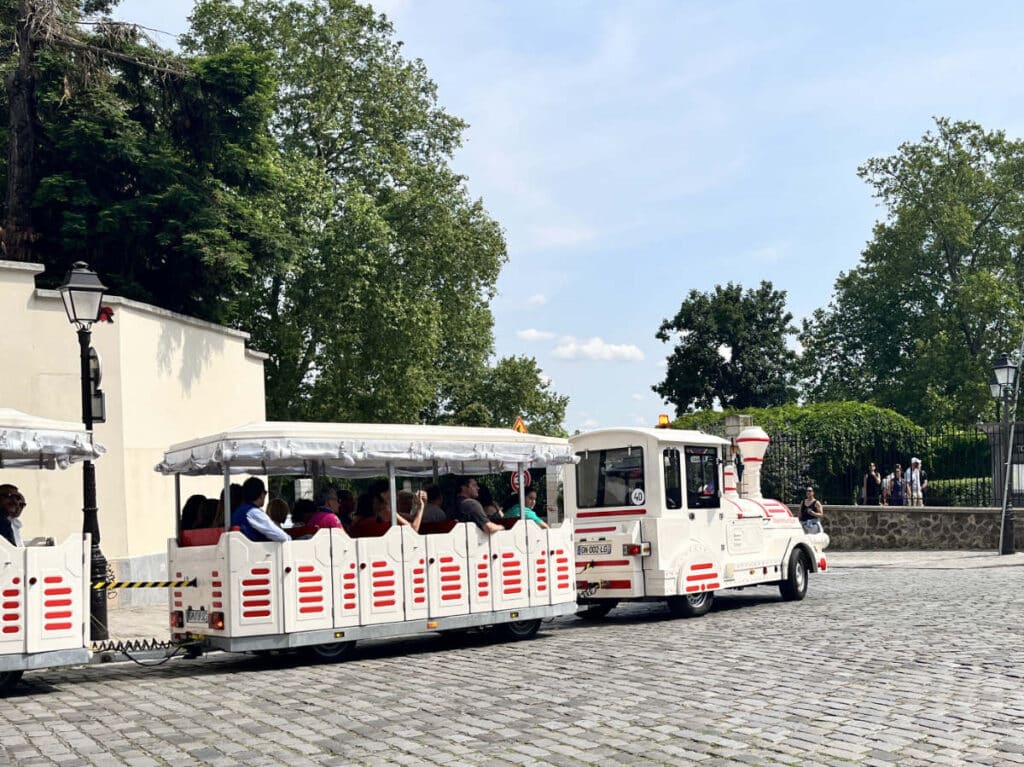
The train takes you for a guided tour of the neighborhood, from Moulin Rouge and Place du Tertre to the Sacre Coeur Basilica. Kids under 2 years old are free on the train.

If you enjoyed this article, you may like to read more facts about France. A bientôt!

